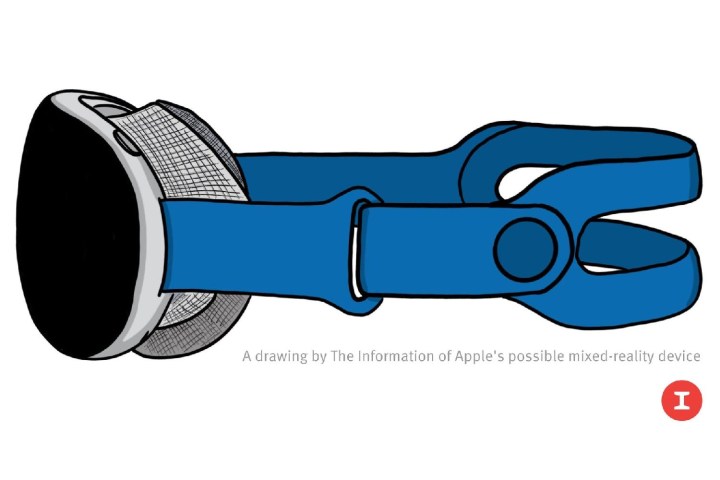Over the last week, we’ve seen a huge amount of news and rumors concerning Apple’s planned mixed-reality headset. Now, one of the most accurate Apple leakers has chimed in with more fuel for the fire — but it’s not good news if you’re concerned about the device’s price.
The news comes from Bloomberg reporter Mark Gurman, whose track record for Apple rumors is one of the best in the biz. In his latest Power On newsletter, Gurman explains that Apple’s headset could cost upwards of $2,000, potentially making it one of the most expensive Apple devices.

Apple often charges more than its competitors, partly to guarantee high profit margins, and partly to recoup the cost of high-end components used in its devices. According to Gurman, the headset’s high price has more to do with the latter of those two factors.
“I’d expect two processors inside of the device, including one on par with the M1 Pro in the MacBook Pro,” Gurman said. “Combine that with multiple displays — including super-high-resolution 8K panels — an interchangeable prescription lens option, and advanced audio technology, and the costs add up. And don’t forget seven years of internal development expenses that need to be recouped.”
All that suggests you shouldn’t get your hopes up for an affordable device. Both news outlet The Information and industry analysts Display Supply Chain Consultants have previously predicted a price tag of several thousand dollars. Reputable analyst Ming-Chi Kuo has bucked the trend by arguing for a $1,000 starting price, but he seems to be in the minority here. And with Gurman now expecting a price “above $2,000,” it appears Apple is targeting a high-end audience with cash to burn.
What’s in a name?

Gurman also added some more details regarding the chip setup inside the headset.“My belief is that the chip inside the Apple headset will be on par with the M1 Pro, making it better than the M1,” Gurman said. “The main reason for going with an M1 Pro over an M1 isn’t CPU speeds. It’s the need for more advanced graphics. As you may know, the M1 has an eight-core GPU, whereas the M1 Pro has 14 to 16 graphics cores.”
“Given that it will have multiple processors, a fan, extremely high-resolution displays, and its own App Store,” gaming will be the priority, Gurman continued. However, media consumption and communications will also be important: “I expect Apple to work with media partners to create content that can be watched in VR on the device,” Gurman claims, adding that people should “look for Animojis and a VR FaceTime-like experience to be the new-age Zoom.”
In the same newsletter, Gurman outlined some possible names Apple might pick for the device. He ruled out Spectacles and Glass, since those have already been taken by Snap and Google respectively. Interestingly, the Apple Glass name was previously mentioned by leaker Jon Prosser, although Gurman himself dismissed the idea, stating that Apple would not use the same name as a failed product like Google Glass.
PSA/Reminder: That “Apple Glass leak” was complete fiction, all the way from the Glass name down to the “Steve Jobs Heritage Edition.” No chance Apple re-uses the name of a failed product for their own AR glasses.
— Mark Gurman (@markgurman) July 14, 2020
The Power On latest newsletter posits some other possibilities. Gurman believes that Apple Vision is the most likely contender, with Apple Reality not far behind. Apple Sight and Apple Lens could be possible, he believes, but you shouldn’t bet on names like Apple Goggles, Apple AR, or Apple VR, mainly because they might pigeonhole the device and its future capabilities.
With so many leaks in such a short space of time, it feels like Apple’s mixed-reality headset is becoming more real by the day — whatever Apple ends up calling it. If the rumors about its power (and price) prove correct, it could be one of the most notable Apple products in years.
Editors' Recommendations
- This new VR headset beats the Vision Pro in one key way and is half the price
- The biggest threat to the MacBook this year might come from Apple itself
- We have some bad news for Quest owners
- Apple’s Vision Pro could be coming to these countries next
- What’s behind customers returning their Vision Pro headsets?




